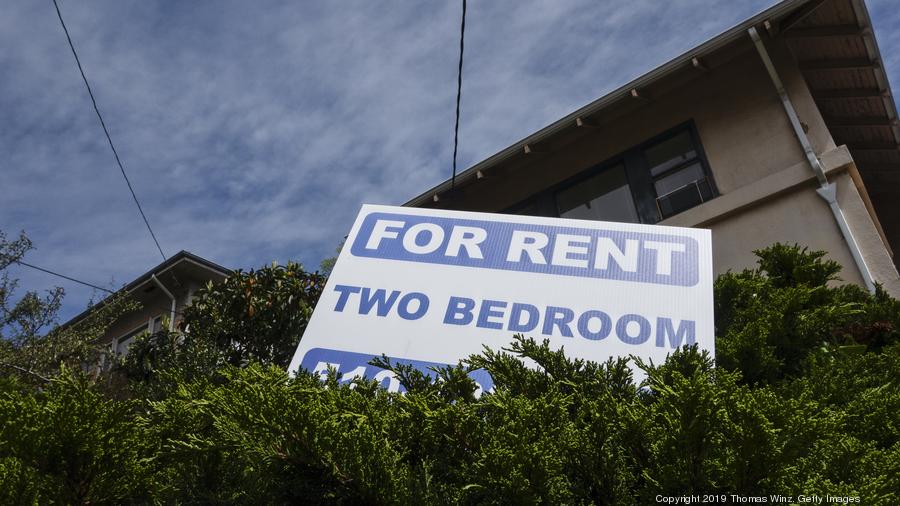Listen to this article 3 min
Despite a recent cooldown in the U.S. apartment market that has slowed the record rental-rate increases seen during the pandemic, more renter households are cost-burdened than ever before.
That's according to a new report by Harvard University's Joint Center for Housing Studies, which found the number of renter households spending more than 30% of their income on rent and utilities has risen by more than 2 million, to a record high of 22.4 million, in three years.
Stay on top of the latest real estate news by signing up here for The National Observer: Real Estate Edition.
Among cost-burdened households, 12.1 million had housing costs that ate up more more than half of their income, an all-time high of households considered severely burdened, according to the report.
Since 2012, the U.S. has lost about 2.1 million units that rent for less than $600 — a benchmark of what's affordable for a household earning $30,000, said Whitney Airgood-Obrycki, senior research associate at the Harvard center, during a Jan. 25 presentation on the report's findings.
That means residual income — how much households have left to spend after housing-related costs — has declined, especially among the lowest-income households. Among all renter households, monthly residual income was $2,600 in 2022, down 4% from 2001. But among households making less than $30,000, monthly residual income fell to an all-time low of $310 per month in 2022, down 47% from 2001.
Meanwhile, homelessness is on the rise. Airgood-Obrycki said 2022 saw the largest single-year jump in the number of people experiencing homelessness nationally. In 2023, a record-setting 653,100 people in the U.S. were unhoused on a given night in January.
The findings underscore how much rental-rate increases leading up to and during the pandemic — combined with higher costs in general — have pinched lower-income households.
Aging rental housing a growing issue
Another major finding of the Harvard study is how old America's rental stock has become, prompting questions about the safety and livability of those units.
Rental housing across the country in 2022 was a median 44 years old, the oldest it's ever been, according to the study. Additionally, 3.9 million renter households lived in homes that did not meet basic standards for suitability and safety in 2021 — an increase of 350,000 households over the past two decades.
Low-income, Black and Hispanic households are disproportionately affected by the adverse effects of living in older rental stock, Airgood-Obrycki said. In 2021, 10% of Black and Hispanic renter households lived in inadequate housing, compared to 7% of white households and 6% of Asian households.
The Federal Reserve Bank of Philadelphia estimates $51.5 billion is needed to address the repair concerns among existing U.S. rental housing.
Ethan Handelman, deputy assistant secretary for multifamily at the U.S. Department of Housing and Urban Development, said during the Jan. 25 presentation that more resources are needed not only to build more housing, but also to fix and preserve existing inventory.
"It is one of the most powerful things we can do," Handelman said. "We have great rental buildings in the heart of our cities, right near transit. If we sustain and improve them so the housing quality keeps up with the need, that will help us, even as we’re adding more supply."
Climate change impacts housing
The issue of aging rental housing becomes more urgent when factoring in the potential impact climate change will have on housing now and into the future. About 41% of the nation’s occupied rental stock, representing 18.2 million units, is in an area exposed to substantial weather- and climate-related threats, according to the Federal Emergency Management Agency’s National Risk Index.
Chris Herbert, managing director of Harvard's JCHS, said policies that address climate change's impact on housing tend to be reactive. He said more work needs to be done to adapt existing homes to be more resilient against severe weather events.
"Rental housing has had a hard time accessing those funds," Herbert said. "When we do have those programs, we have to think about an equity approach."
Low-income households, including ones that use programs like vouchers to help subsidize rent, are more likely to experience substandard living conditions. Despite a mandatory inspection process, 11% of renters who participated in the federal Housing Choice Voucher Program lived in inadequate conditions in 2021, according to the JCHS study.
In 2021, 12% of renter households earning less than $15,000 lived in inadequate housing. That's double the 6% of renters with incomes of $75,000 or more.
"To have 600,000-plus people experiencing homelessness is a disaster," said Jacqueline Waggoner, president of the solutions division at Columbia, Maryland-based housing nonprofit Enterprise Community Partners. "They need a stable place to sleep at night and the services to help themselves and improve what’s happening to them. You hear mayors and governors talking about building more housing. ... We need to preserve what we have. Some of this housing is really old. We need to invest in the systems, we need to invest in the general structure."





